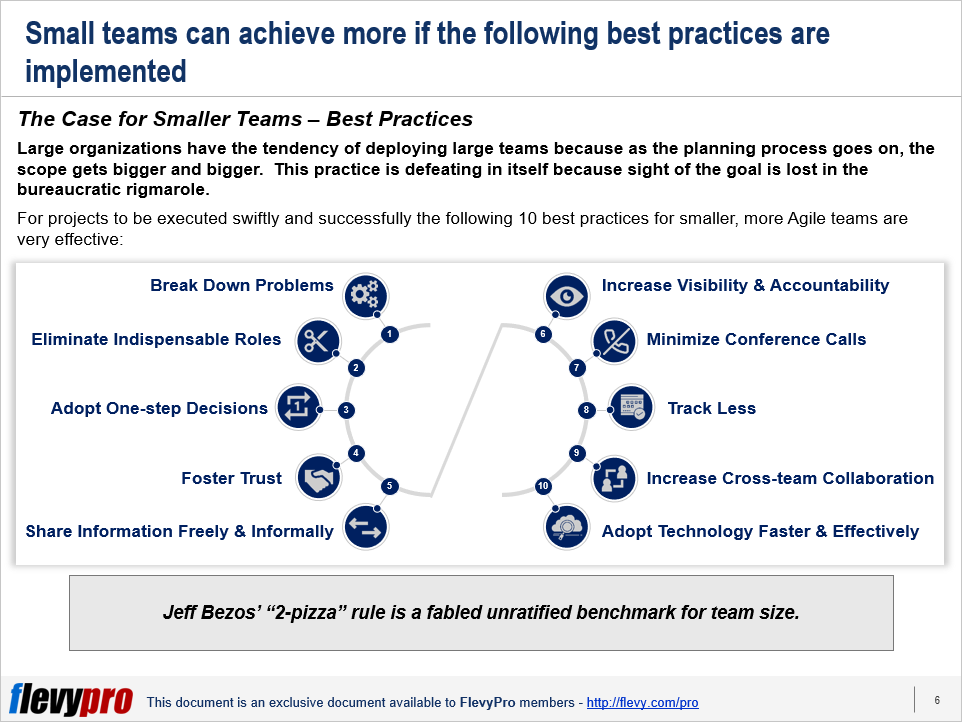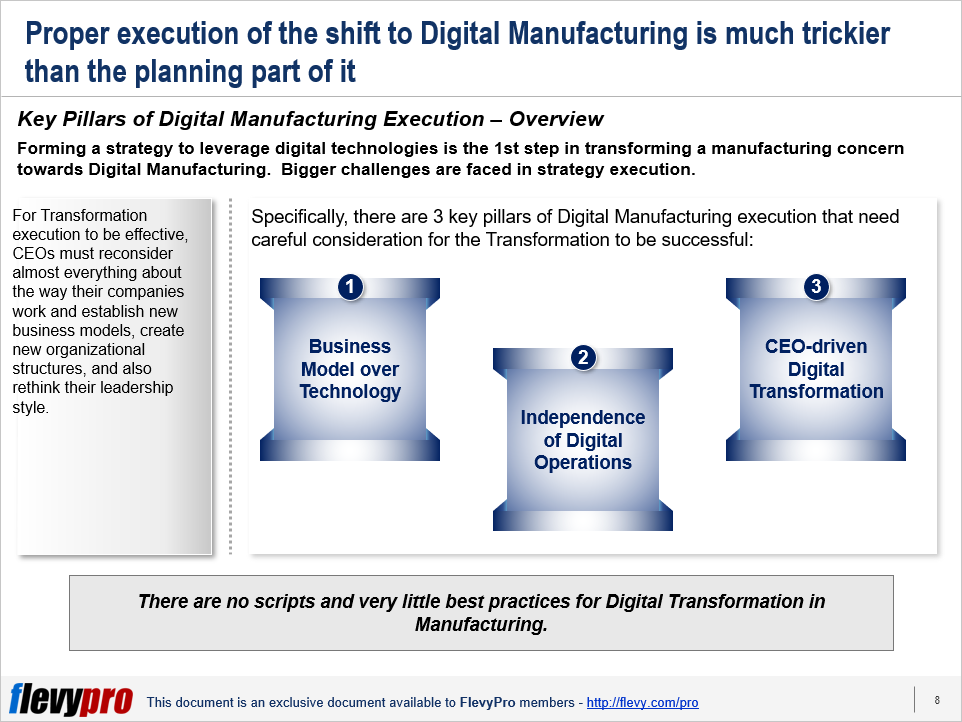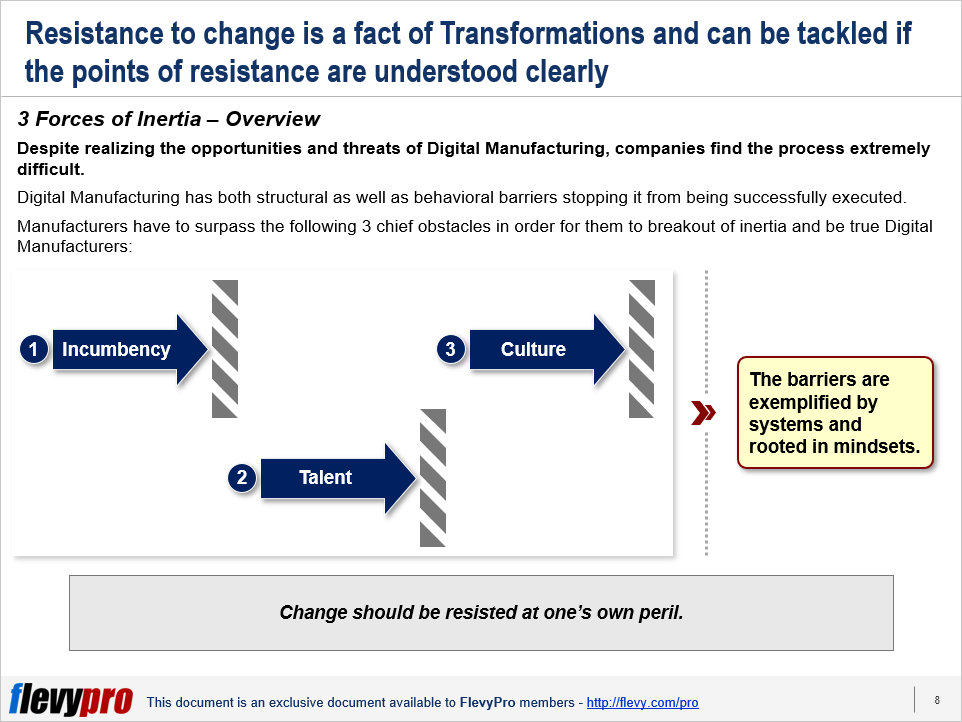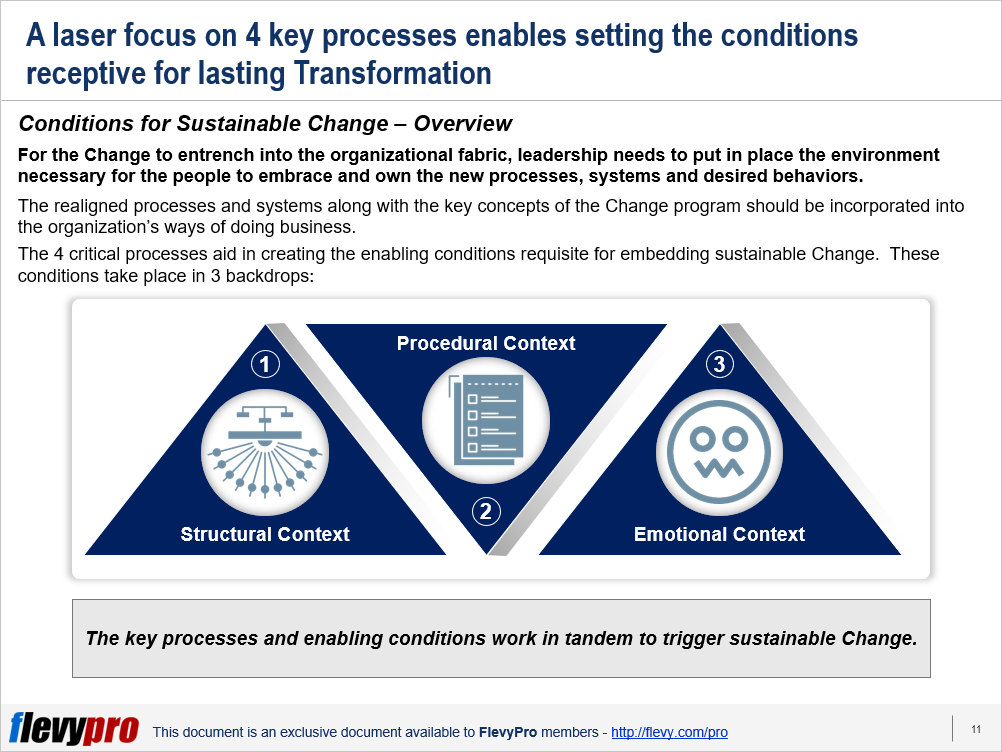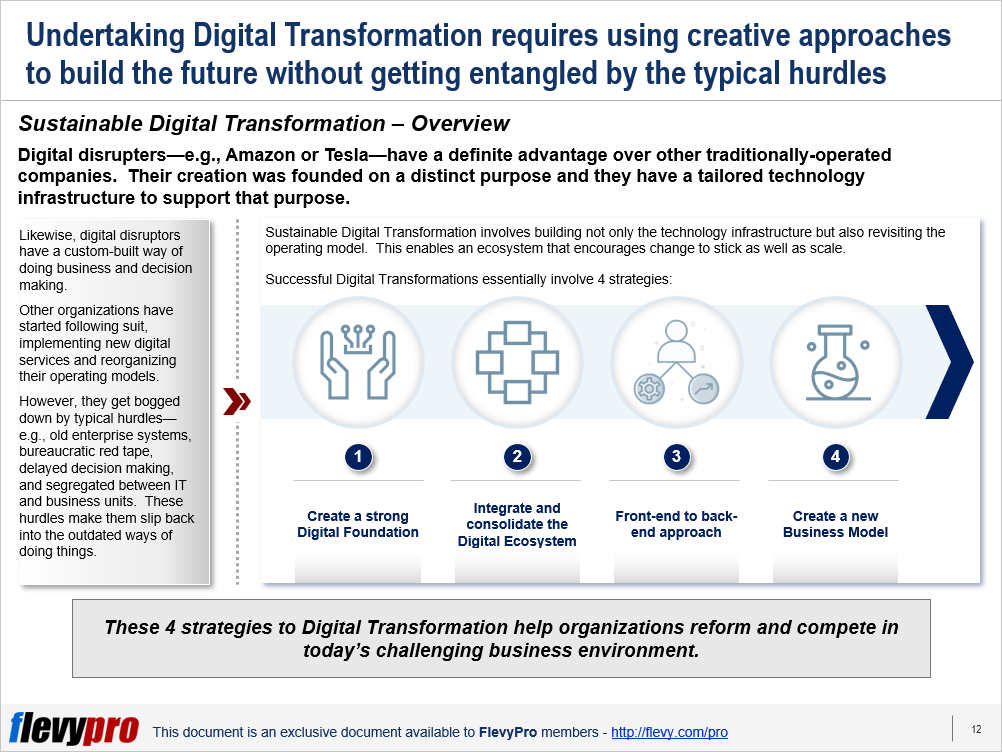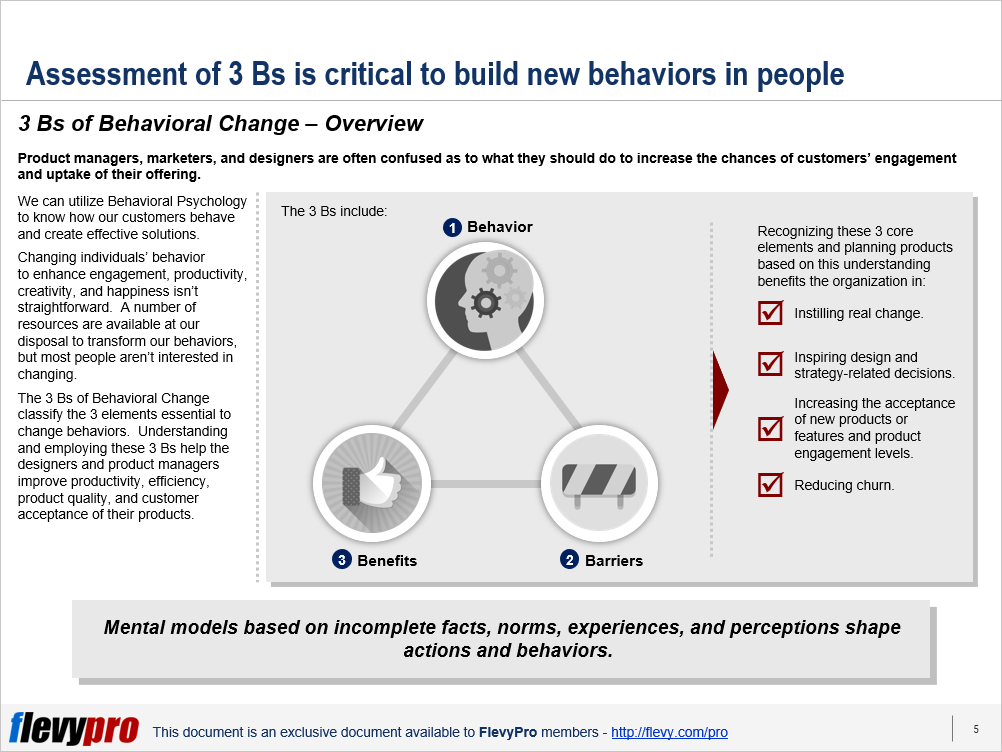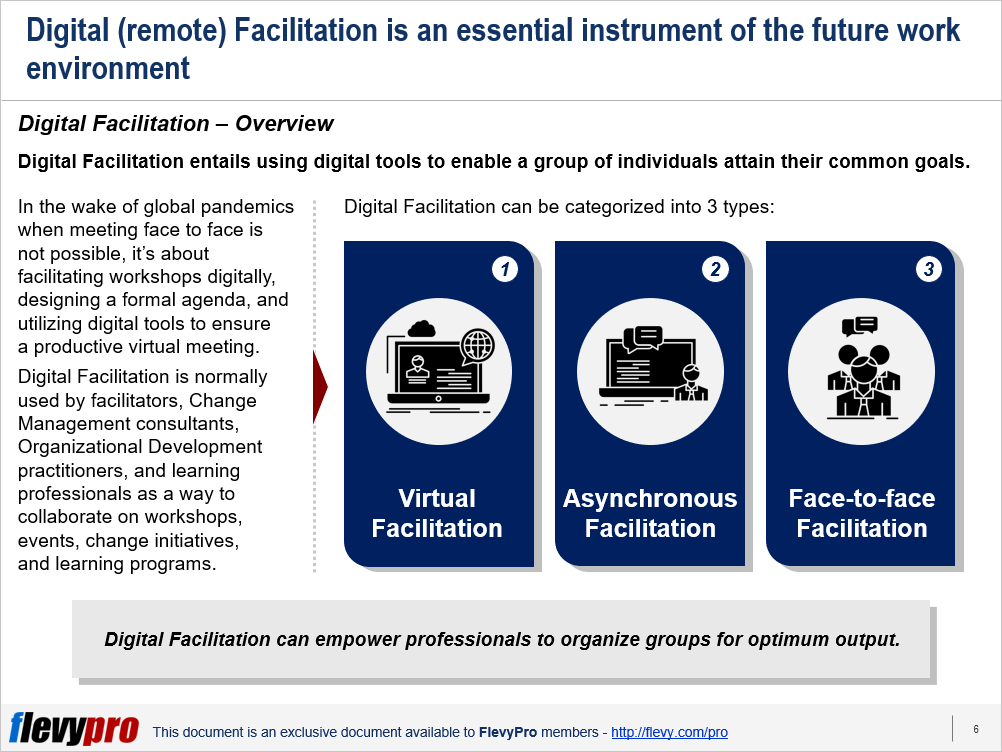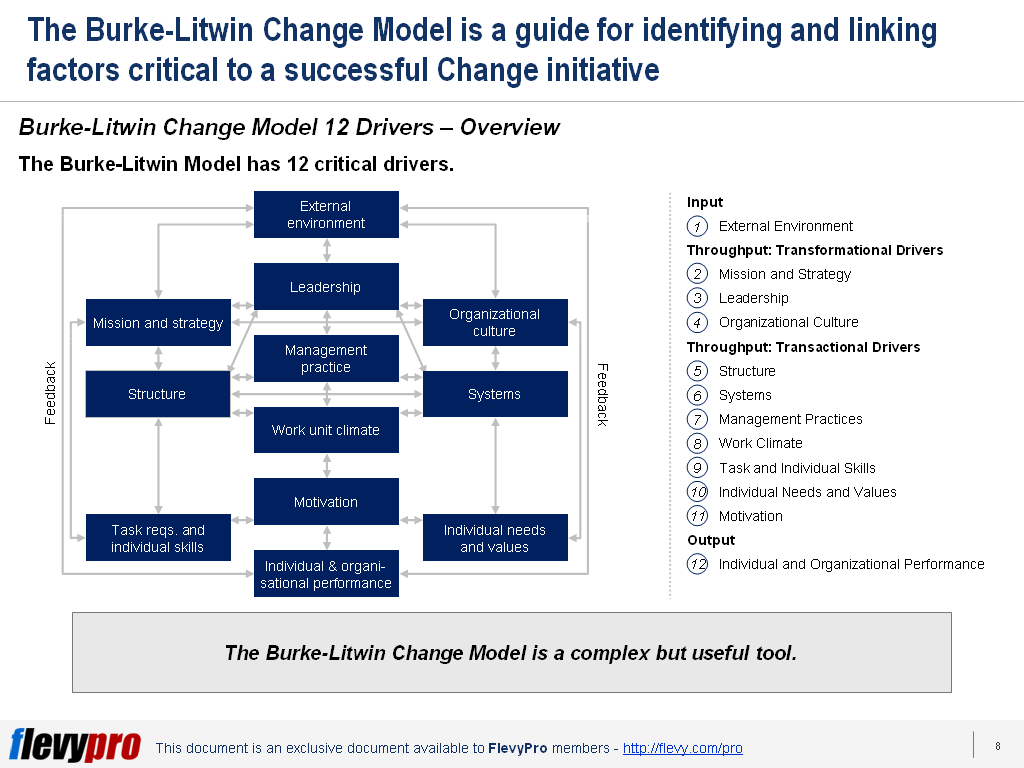Small, Agile Teams: 10 Best Practices
13 Oct

Profitability is at the core of successful businesses. Many markets do not allow as much top-line revenue increase as the companies would like. Therefore, organizations have to focus on improving the bottom-line.
Boosting the bottom-line entails raising Productivity. Productivity enhancement can be achieved by eliminating redundancies and improving processes that change the company. Process Improvement also means less people needed to accomplish the same tasks.
Change projects—as is the case with most other projects—almost always run over budget and over time, especially when new technology comes into the mix. Causes for failures in Change Management are many and one of them is heavy and bureaucratic teams.
Raising Productivity in teams designated for change projects is well-nigh impossible. A solution to this is Building Effective Teams by keeping teams small—a remedy that has shown its effectiveness time and again.
Smaller teams tend to communicate effectively, decide quickly, do course corrections more easily, work faster, and innovate more.
Large organizations have the tendency of deploying large teams because as the planning process goes on, the scope gets bigger and bigger. This practice is defeating in itself because sight of the goal is lost in the bureaucratic rigmarole.
For projects to be executed swiftly and successfully the following 10 best practices for smaller, more Agile teams are very effective:
- Break Down Problems
- Eliminate Indispensable Roles
- Adopt One-step Decisions
- Foster Trust
- Share Information Freely & Informally
- Increase Visibility & Accountability
- Minimize Conference Calls
- Track Less
- Increase Cross-team Collaboration
- Adopt Technology Faster & Effectively
Let us delve a little deeper into some of the best practices.
Break Down Problems
Dividing the project into distinct problems or separating business capabilities into converged organizational units makes it easier for smaller teams to deliver.
Assorting sizable, complex problems into discrete, attainable pieces and teaching members to develop a Problem Solving Mindset enables small teams to take them on easily and over deliver on them.
An alternate to making teams smaller without compromising on the structure of the organization is to separate business capabilities into focused organizational units.
Eliminate Indispensable Roles
Making sure that individuals with a certain type of skill or key people are not scarce in the organization lest they get pulled by different teams at the same time.
Essential people are wanted by all teams, consequentially their time gets split into such small chunks that no task gets done properly. Operational risk becomes prodigious when dependent on a single person.
It is vital to work away from such scenarios in a team.
Adopt One-step Decisions
Bureaucratic way of decision-making in large teams should be avoided by identifying types of decisions and the decision-making authorities, at the outset.
Foster Trust
Trust speeds up progress, augments quality, and diminishes execution risk. Trust has to be built up by conscious effort.
Share Information Freely & Informally
One of the ways for effective Team Management is to keep communication swift and the only way of doing this is to keep it informal.
Interested in learning more about these best practices for Small, Agile Teams? You can download an editable PowerPoint on 10 Best Practices for Small, Agile Teams here on the Flevy documents marketplace.
Do You Find Value in This Framework?
You can download in-depth presentations on this and hundreds of similar business frameworks from the FlevyPro Library. FlevyPro is trusted and utilized by 1000s of management consultants and corporate executives. Here’s what some have to say:
“My FlevyPro subscription provides me with the most popular frameworks and decks in demand in today’s market. They not only augment my existing consulting and coaching offerings and delivery, but also keep me abreast of the latest trends, inspire new products and service offerings for my practice, and educate me in a fraction of the time and money of other solutions. I strongly recommend FlevyPro to any consultant serious about success.”
– Bill Branson, Founder at Strategic Business Architects
“As a niche strategic consulting firm, Flevy and FlevyPro frameworks and documents are an on-going reference to help us structure our findings and recommendations to our clients as well as improve their clarity, strength, and visual power. For us, it is an invaluable resource to increase our impact and value.”
– David Coloma, Consulting Area Manager at Cynertia Consulting
“FlevyPro has been a brilliant resource for me, as an independent growth consultant, to access a vast knowledge bank of presentations to support my work with clients. In terms of RoI, the value I received from the very first presentation I downloaded paid for my subscription many times over! The quality of the decks available allows me to punch way above my weight – it’s like having the resources of a Big 4 consultancy at your fingertips at a microscopic fraction of the overhead.”
– Roderick Cameron, Founding Partner at SGFE Ltd













